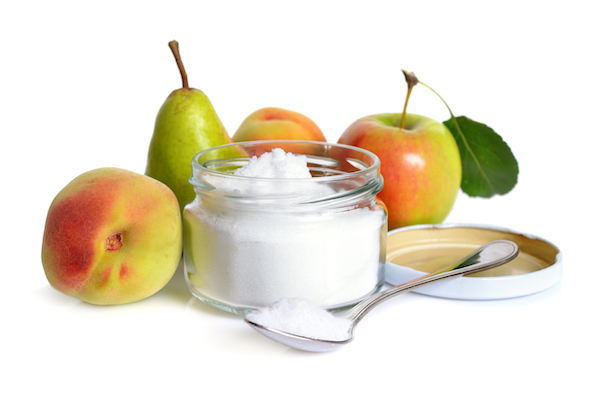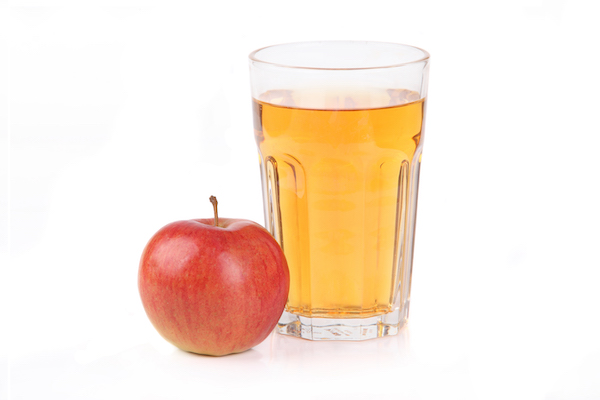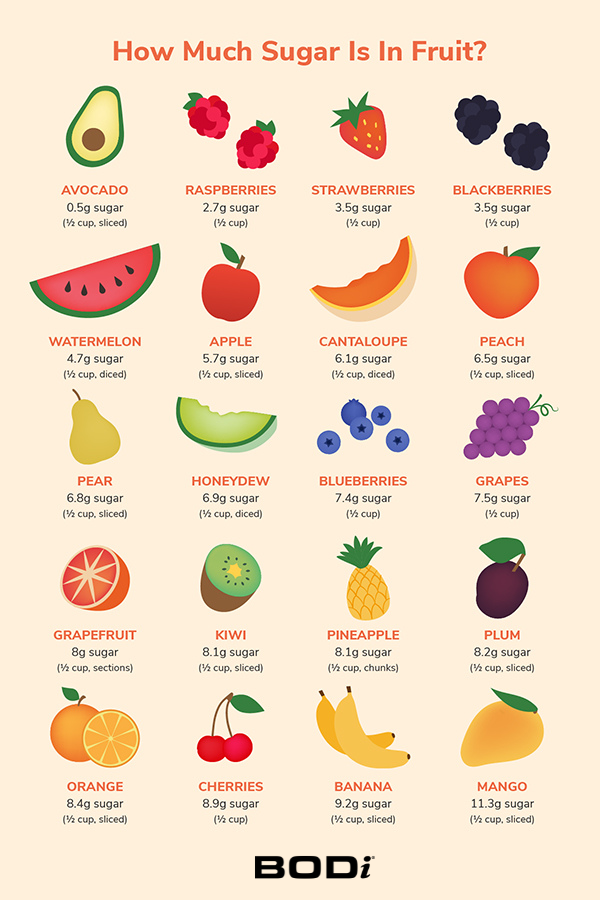Fruits are known as nature’s sweet for a purpose: They’re our largest supply of sugar in minimally processed complete meals. So when the low-carb weight loss program gained reputation, fruit got here underneath scrutiny by scrupulous dieters on the lookout for a dietary edge. We all know fruit is an efficient supply of priceless nutritional vitamins and minerals, however many individuals surprise: Is the sugar in fruit unhealthy for you?
Learn on to get a greater understanding of the sugar in your fruit and whether or not not it could be a priority for you.
Is Sugar in Fruit Dangerous for You?
In brief, no, you most likely shouldn’t remove that every day banana. Specialists do need you to eat much less sugar, however you need to attempt to slash added sugar, not the naturally occurring sugars from fruit and dairy. That’s as a result of pure sugars additionally comprise fiber, which slows down your physique’s absorption of that sugar and due to this fact helps stability blood sugar ranges.
As an alternative of axing fruit, attempt chopping down on sugary drinks comparable to sodas, lattes, vitality drinks, and sports activities drinks, in addition to refined carbohydrates comparable to cookies, desserts, and candies. In comparison with a few of these sugar bombs, fruit’s sugar content material doesn’t come shut — and it’s actual, nutritionally superior meals.
Nonetheless, moderation is vital as a result of the sugar in fruit continues to be sugar.
Can You Eat Too A lot Sugar from Fruit?

Typically. Naturally occurring sugar in fruit is best than refined sugar, but it surely’s nonetheless doable to overdo it: “For individuals who have a robust sugar habit, or who wish to drop a few pounds, you possibly can truly overindulge in [fruit] in case you’re consuming all of them day lengthy,” says Keri Glassman, MS, RD, CDN.
Researchers like Dr. Robert Lustig affiliate fructose to “alcohol with out the thrill.” The essential argument: Glucose can be utilized by any tissue within the physique, however solely the liver is chargeable for processing fructose, which, keep in mind, is the principle supply of sugar in fruit.
When confronted with fructose, the liver has two decisions: It could actually convert fructose into glucose to gasoline different tissues, or it could actually convert the fructose into fats and retailer it. If you happen to frequently eat greater than sufficient energy, guess what alternative your liver makes? That’s proper: It’ll retailer extra fructose as fats.
This isn’t good as a result of over time, this fats can accumulate within the liver and drive up your threat for insulin resistance and kind 2 diabetes.
Is Sugar in Fruit the Identical as Common Sugar?
The sticky sweetness you take pleasure in from a crisp apple comes from fructose, the principle (however not the one) sugar in fruits. Fruits comprise a mixture of sugars — for instance, an apple incorporates 6 p.c fructose and three p.c sucrose by weight. Sucrose is what we generally know as desk sugar, and it’s made up of fructose and glucose models (molecules) joined collectively.
As soon as eaten, you possibly can digest each sucrose and fructose into glucose, which your mind and physique makes use of as gasoline — and glucose is what results in your bloodstream and raises your blood sugar. Whereas sucrose could be rapidly digested into glucose to spike blood sugar, fructose is extra difficult.
Pure fructose doesn’t increase blood sugar very a lot, making it a preferred sweetener for diabetics. In fact, that doesn’t give it a free move.
When Ought to You Keep away from Consuming Fruit?

The proof towards fructose collected by well-intentioned researchers like Dr. Lustig is partly why it’s possible you’ll encounter sugar-phobic people. However remember that even Dr. Lustig, who goes on document calling sugar “poisonous,” advised the New York Instances he wouldn’t advise chopping out fruit.
Principally, in case you’re involved about your sugar consumption, it’s possible you’ll wish to think about avoiding fruit when it’s been extremely processed — that apple juice isn’t the identical as consuming an apple, and also you is probably not getting the identical ratio of useful fiber in comparison with the apple.
Additionally, be cautious of dried fruit. Dried fruit does comprise fiber, however at a a lot decrease quantity, which makes overeating a extra probably prospect.
How A lot Sugar Is in Fruit?
Nonetheless all for reaching for lower-sugar fruits? Right here’s a chart that will help you perceive how a lot sugar is in 20 well-liked fruits:
*Chart displayed from least sugar to most sugar by grams.
| Fruit | Weight | Cals | Carbs | Fiber | Sugar* | % sugar by weight |
| Avocado (½ cup, sliced) | 73 g | 117 | 6.2 g | 4.9 g | 0.5 g | 1% |
| Raspberries (½ cup) | 61.5 g | 32 | 7.3 g | 4 g | 2.7 g | 4% |
| Strawberries (½ cup) | 72 g | 23 | 5.5 g | 1.4 g | 3.5 g | 5% |
| Blackberries (½ cup) | 72 g | 31 | 6.9 g | 3.8 g | 3.5 g | 5% |
| Watermelon (½ cup, diced) | 76 g | 23 | 5.7 g | 0.3 g | 4.7 g | 6% |
| Apple (½ cup, sliced) | 54.5 g | 28 | 7.5 g | 1.3 g | 5.7 g | 10% |
| Cantaloupe (½ cup, diced) | 78 g | 27 | 6.4 g | 0.7 g | 6.1 g | 8% |
| Peach (½ cup, sliced) | 77 g | 30 | 7.4 g | 1.2 g | 6.5 g | 8% |
| Pear (½ cup, sliced) | 70 g | 40 | 10.7 g | 2.2 g | 6.8 g | 10% |
| Honeydew (½ cup, diced) | 85 g | 31 | 7.7 g | 0.7 g | 6.9 g | 8% |
| Blueberries (½ cup) | 74 g | 42 | 10.7 g | 1.8 g | 7.4 g | 10% |
| Grapes (½ cup) | 46 g | 31 | 7.9 g | 0.4 g | 7.5 g | 16% |
| Grapefruit (½ cup, sections) | 115 g | 37 | 9.3 g | 1.3 g | 8 g | 7% |
| Kiwi (½ cup, sliced) | 90 g | 55 | 13.2 g | 2.7 g | 8.1 g | 9% |
| Pineapple (½ cup, chunks) | 82.5 g | 41 | 10.8 g | 1.2 g | 8.1 g | 10% |
| Plum (½ cup, sliced) | 82.5 g | 38 | 9.4 g | 1.2 g | 8.2 g | 10% |
| Orange (½ cup, sliced) | 90 g | 42 | 10.6 g | 2.2 g | 8.4 g | 9% |
| Cherries (½ cup) | 69 g | 43 | 11 g | 1.4 g | 8.9 g | 13% |
| Banana (½ cup, sliced) | 75 g | 67 | 17.1 g | 2 g | 9.2 g | 12% |
| Mango (½ cup, sliced) | 82.5 g | 50 | 12.4 g | 1.3 g | 11.3 g | 14% |


